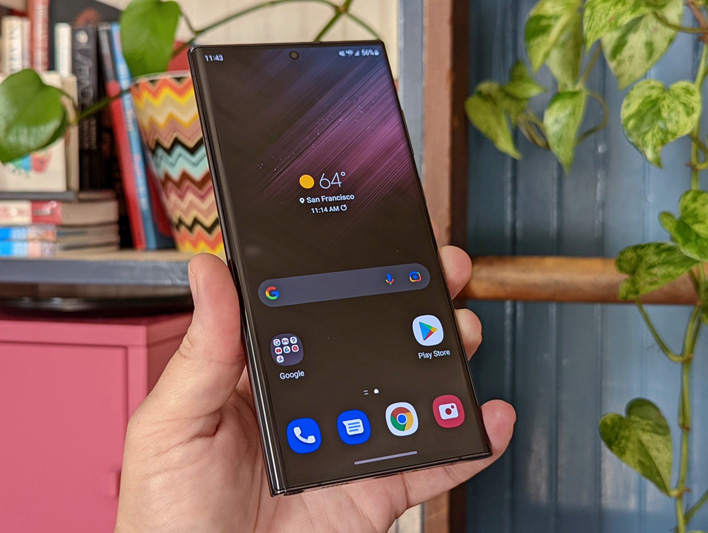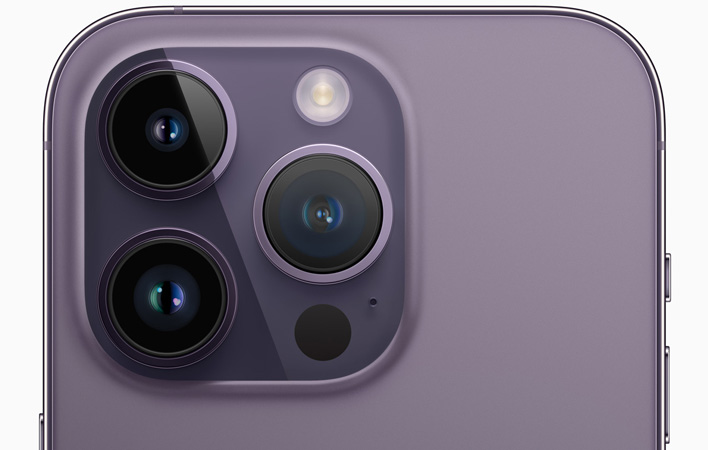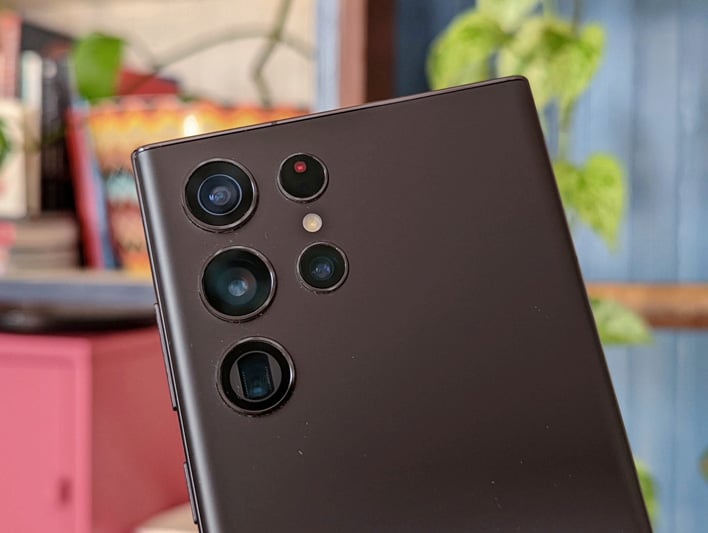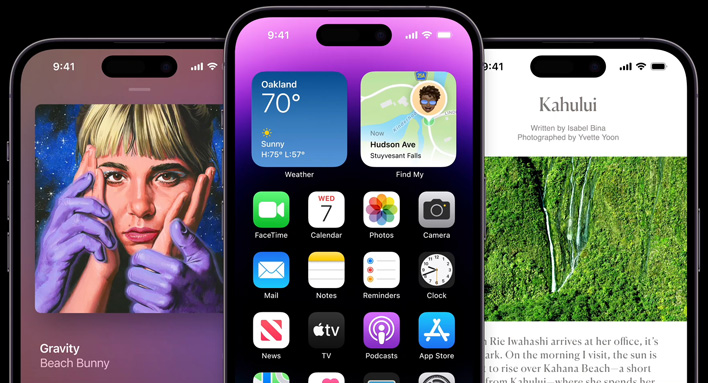Apple iPhone 14 Launches With Some Huge Upgrades, Does It Compete With Android's Finest?
Let’s quickly recap the Cupertino juggernaut’s announcement. The 6.1-inch iPhone 14 and 6.7-inch iPhone 14 Plus mostly share an experience save for the size. Both phones use Apple’s A15 Bionic which debuted with the iPhone 13 family with a 5-core GPU. The devices feature bright 1200 nit rated Super Retina XDR OLED displays with support for Dolby Vision. They also share a dual camera array with a 12-megapixel primary camera and Ultra Wide camera. Apple claims the 14 Plus offers the best battery life of any iPhone, and we see not reason not to believe it.

The iPhone 14 Pro lineup is similarly differentiated by size while retaining more or less identical capabilities otherwise with a new A16 Bionic SoC. The duo is available in the same two sizes—a 6.1-inch iPhone 14 Pro and 6.7-inch iPhone 14 Pro Max. The display gets a significant upgrade to match the Pro Display XDR’s up to 2000 nit HDR rating. These also bring the iPhone family’s first always-on display functionality, which Android phones have had for years. Apple has employed variable refresh rate technology to bring the display down to 1 Hz in this mode to save battery life. Of course, the camera array is also juiced up, but we will cover that in a moment.

Obviously, the Android ecosystem has far more diverse offerings, but we want to resist cherry-picking individual features from various phones. Consumers do not care if they could theoretically Frankenstein together a comparable option, they need it all in one package. As such, we will primarily pit the Apple iPhone 14 Pro Max up against the Samsung Galaxy S22 Ultra. The S22 Ultra is a few months on now from its February 2022 release, but it makes a better direct reference point than the new Galaxy Z Fold4.
Starting with raw horsepower, we think the iPhone 14 Pro Max is off to an easy win. We primarily have GPU benchmarks to compare between, but in every case the Galaxy S22 Ultra’s Qualcomm Snapdragon 8 Gen 1 SoC falls to the A15 Bionic found in the prior-generation iPhone 13 Pro. It stands to reason that the new A16 Bionic will push that lead further and Apple claims it is “40 percent faster than the competition.” While the Galaxy S23 Ultra is expected to use a yet-unannounced Snapdragon 8 Gen 2, we do not expect it to close the gap either.
Display technology is a much closer battle. The Galaxy S23 Ultra holds its own 1750 nit peak brightness rating which is likely indistinguishable from the iPhone 14 Pro Max if the two devices are not held side by side. The Galaxy’s display is higher resolution at 3088 x 1440 compared with the iPhone’s 2796 x 1290 resolution, which also affords the S22 Ultra a higher 500 pixels per inch density (vs 460ppi). Samsung knows how to make a phenomenal smartphone display, but we cannot give either the edge without seeing them together first-hand.

On the specsheet, the Galaxy S22 Ultra’s 108-megapixel primary camera ought to afford just over double the resolution of the iPhone 14 Pro Max’s 48-megapixel shooter. While most users will point and shoot with default settings which include pixel-binning, both phones allow photographers to capture full-resolution raw images as well.
Resolution is only part of the image quality formula though. Most image sharing websites, like Instagram, perform their own image compression, but even for large prints it hardly helps to exceed a dozen megapixels at any reasonable viewing distance.

Instead, each device’s physical optical formula and software processing may play a larger role. Apple’s default processing tends to produce a very natural looking appearance, but even Samsung has grown out of its over-saturating ways to deliver more life-like colors. Apple’s main camera uses a 24mm full-frame equivalent focal length with f/1.78 aperture. Samsung lists its camera as having an 85° field of view which translates approximately to a slightly wider 20mm equivalent focal length using an f/1.8 aperture. The minor difference in aperture will not have a meaningful impact on exposure, but when added with the iPhone’s slightly larger 1/1.3” sensor to Samsung’s 1/1.33” sensor, it may allow a touch more subject isolation before processing is applied.
Samsung is likely to retain the edge for zoom. Both competitors offer two tiers of telephoto lens options, but each of Samsung’s tiers provides a little more optical zoom. At the first tier, Apple’s iPhone 14 Pro Max provides a 45mm equivalent while the Galaxy S22 Ultra is closer to 55mm equivalent, though both are suitable for headshots. Apple’s second tier telephoto lens steps up to a 77mm equivalent, but the Galaxy S22 Ultra’s offering has about 180-200mm equivalency for 10x the optical zoom of its primary lens. Even a small megapixel bump from 10 to 12 MP cannot help Apple overcome this optical advantage, though it may be better for the in-between ranges north of 77mm.
If you’d like to see a head-to-head camera battle between these flagships, let us know. In the meantime, there are parts of the experience for each phone that a specsheet cannot capture. The new iPhones have a greater emphasis on safety with enhanced Emergency SOS capability. The phones can now detect a car crash automatically and call emergency responders. While these are not the first phones with this feature, they are able to maximize success by routing emergency messages via satellite if cellular coverage is unavailable.

The iPhone 14 Max variants also leverage the in-display camera punchout in a novel way. Instead of minimizing its appearance like the Galaxy S23 Ultra’s small holepunch, the iPhone 14 Max models incorporate a depth sensor that necessarily increases the footprint. Instead, Apple leverages OLED’s ability to fully black out individual pixels to artificially expand its size in playful ways that Apple calls the Dynamic Island. This becomes home to background but still important notifications like a music player or map navigation, changing shape accordingly. We have concerns about encouraging users to touch all around the camera lens though, so keep a cloth handy if you use it a lot.
A notable absence on the iPhone 14 experience is the ability to use physical SIM cards. While eSIMs are probably the future, many carriers do not yet support them. This may not be a big deal domestically where there is a lot of choice, but international travelers will not be able to take advantage of local physical SIM cards when in other regions. They can be forced to use a more expensive carrier that supports eSIM or else not have the option to connect at all. While Android also supports eSIM, it has yet to force the transition.
There are naturally larger divides between the Apple and Android ecosystems that may make the comparison a non-issue. Do you prefer Apple’s premium walled-garden approach, or do you feel captive to it because of iMessage and other lock-ins? Or are you more drawn to Android’s less-closed philosophy and diverse selection of formfactors? Is Apple innovating or just playing catchup? Do the specifications even matter to you?


